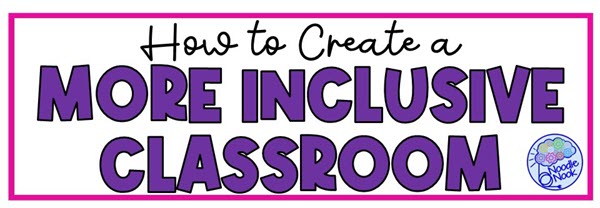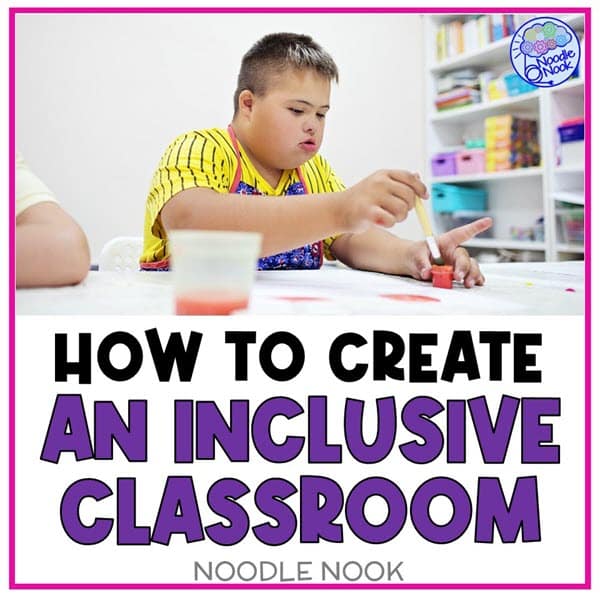Creating inclusive classrooms for students with disabilities is about ensuring that all students feel welcome and included in the classroom. It’s crucial for academic and social success. This is especially important for students with disabilities, who may have unique needs that require accommodations or modifications to fully participate in the learning environment.
Inclusive classrooms, which are designed to meet the needs of all students, can help to close the gap in special education and provide an equal learning opportunity for all students.
Here are some strategies for creating inclusive classrooms for students with disabilities:
Identify and address barriers to learning
Identifying and addressing barriers to learning is an important step in creating inclusive classrooms for students with disabilities. These barriers can take many forms, including physical, social, and academic challenges. Some common barriers that students with disabilities may face include:
Physical barriers:
These can include lack of accessibility in the classroom or school building, such as stairs or narrow doorways that may be difficult for students using mobility devices to navigate. It can also include lack of accessible furniture or equipment, such as desks or chairs that are not suitable for students with physical disabilities.
Social barriers:
Negative attitudes or stigma from classmates or teachers can be a major barrier to learning for students with disabilities. This can include bullying, isolation, or exclusion from group activities.
Academic barriers:
Students with disabilities may struggle with certain subjects or tasks due to their disability. For example, a student with a learning disability may have difficulty with reading or writing, while a student with a physical disability may struggle with tasks that require fine motor skills.
To address these barriers, teachers can work with the student, their parents, and other school staff to develop a plan that meets the student’s needs. This can include making physical modifications to the classroom or school building, implementing accommodations such as extra time for tests or use of assistive technology, and providing social and emotional support to the student. It is also important to educate classmates and school staff about the student’s disability and the accommodations or modifications that are needed to ensure their success. By identifying and addressing these barriers, teachers can create a more inclusive and supportive learning environment for students with disabilities.
Use inclusive teaching strategies
Using inclusive teaching strategies is an important aspect of creating inclusive classrooms for students with disabilities. Inclusive teaching strategies are those that are designed to meet the needs of all students, including those with disabilities. Some examples of inclusive teaching strategies include:
Using visual aids:
Visual aids, such as pictures, diagrams, or videos, can be particularly helpful for students with learning disabilities or those who have difficulty processing information through auditory means. Visual aids can also be useful for students who are learning a new language or who have difficulty with abstract concepts.
Providing hands-on activities:
Hands-on activities, such as experiments, projects, or manipulatives, can help to engage all students, including those with disabilities. These activities can provide a concrete, tactile way for students to learn and can be particularly beneficial for students with learning disabilities or those who have difficulty with abstract concepts.
Using assistive technology:
Assistive technology, such as text-to-speech software or speech-to-text software, can help students with disabilities to access and participate in the classroom. There are many different types of assistive technology available, and teachers can work with the student and their parents to determine which type is most appropriate for their needs.
Allowing for flexible grouping:
Flexible grouping allows teachers to group students in different ways depending on the task or activity. This can include grouping students by ability, by learning style, or by interest. Flexible grouping can help to meet the needs of all students, including those with disabilities, by providing them with the opportunity to work with peers who have similar needs or abilities.
By using these and other inclusive teaching strategies, teachers can create a more inclusive and supportive learning environment for students with disabilities.
Involve students in the planning process
Involving students in the planning process is an important step in creating inclusive classrooms for students with disabilities. This can help to ensure that the student’s needs are being met and that they feel included and valued in the classroom. Some ways to involve students in the planning process include:
Asking for feedback:
Teachers can ask students with disabilities for feedback on the accommodations and modifications that they need in order to fully participate in the classroom. This can help to ensure that the student’s needs are being met and can also help to increase their sense of ownership and responsibility in their own learning.
Involving them in decision-making:
Teachers can involve students with disabilities in decisions about the classroom environment and lesson planning. This can include asking for their input on the layout of the classroom, the materials and resources that are used, and the types of activities that are included in the lesson plan.
Providing opportunities for leadership:
Teachers can provide opportunities for students with disabilities to take on leadership roles in the classroom. This can include assigning them tasks such as leading a discussion or leading a group activity. Providing leadership opportunities can help to increase the student’s sense of ownership and responsibility in the classroom and can also help to foster positive relationships with their peers.
By involving students with disabilities in the planning process, teachers can create a more inclusive classroom for students with disabilities. Plus, they’ll build a supportive learning environment and help to ensure that the student’s needs are being met. This can help to close the gap in special education and provide equal learning opportunities for all students.
Promote a positive and inclusive culture
Promoting a positive and inclusive culture in the classroom is an important aspect of creating an environment that is welcoming and supportive for students with disabilities. A positive and inclusive culture can help to foster a sense of belonging and acceptance for all students and can also help to reduce negative attitudes or stigma towards students with disabilities. Here are some strategies for promoting a positive and inclusive culture in the classroom:
Use inclusive language: Using language that is inclusive and respectful of all students, including those with disabilities, is important for creating a positive and welcoming classroom environment. This can include avoiding labels or terms that may be perceived as stigmatizing and instead using person-first language that focuses on the individual rather than their disability.
Promote respectful behavior: Encouraging respectful behavior from all students, including those with disabilities, can help to create a positive and inclusive classroom culture. This can include teaching students about empathy and the importance of treating others with kindness and respect.
Celebrate diversity: Celebrating diversity in the classroom can help to create a sense of acceptance and belonging for all students, including those with disabilities. This can include incorporating diversity into lesson plans and activities and providing opportunities for students to learn about and appreciate different cultures and backgrounds.
By implementing these strategies, teachers can create a positive and inclusive culture in the classroom that is welcoming and supportive for all students, including those with disabilities.
Recap: How to Create and Inclusive Classroom
Creating an inclusive classroom is essential for ensuring that all students, including those with disabilities, feel welcomed and supported in the learning environment. This can be achieved through a variety of strategies, including identifying and addressing barriers to learning, using inclusive teaching strategies, involving students in the planning process, and promoting a positive and inclusive culture.
By implementing these strategies, teachers can start creating inclusive classrooms for students with disabilities that are inclusive and supportive. This can help to close the gap in special education and providing equal learning opportunities for all. It is important to remember that creating an inclusive classroom is an ongoing process and requires ongoing reflection and adjustment to meet the changing needs of students. By committing to inclusivity and continuously seeking ways to improve, teachers can create a classroom environment that is welcoming and supportive for all students.


